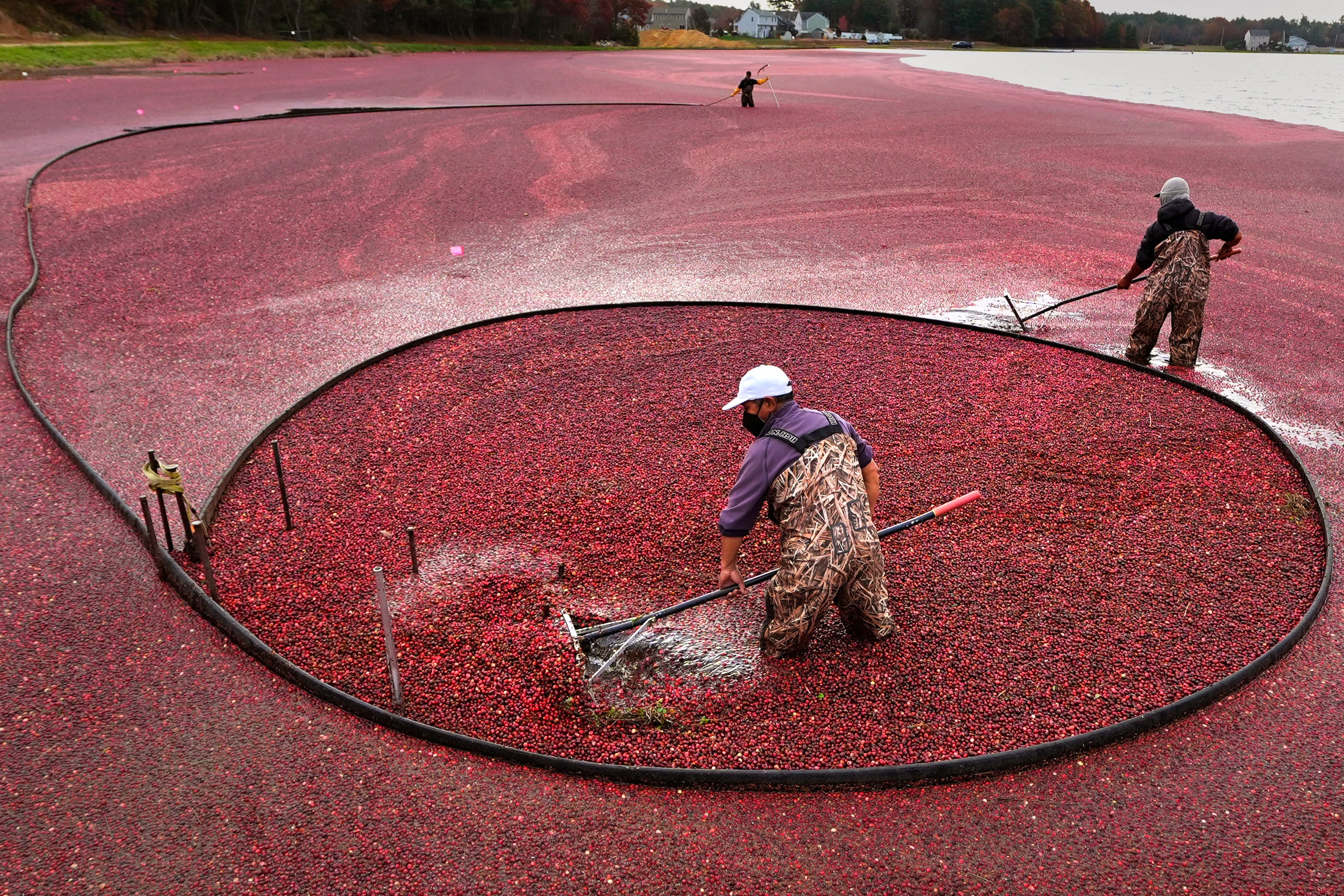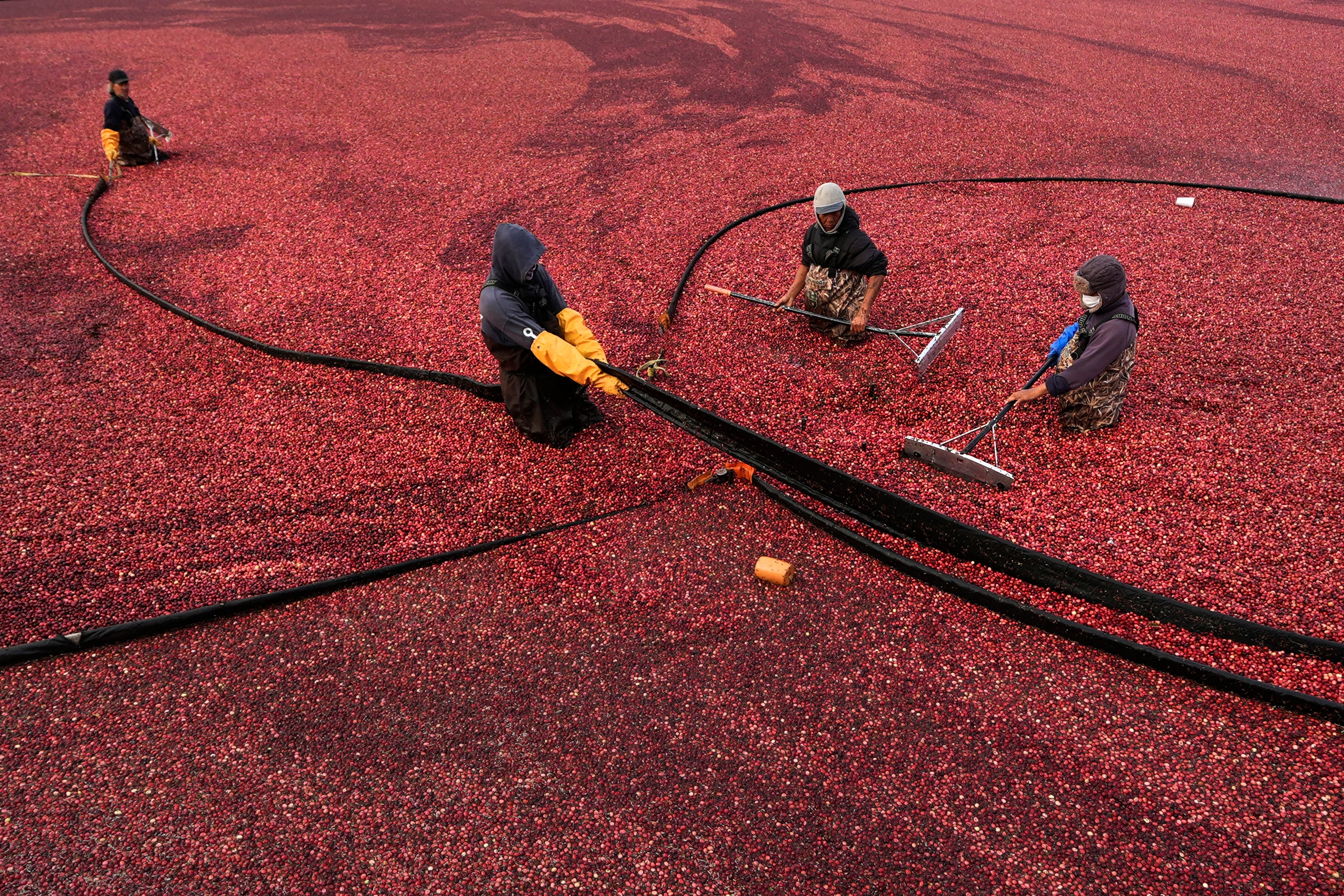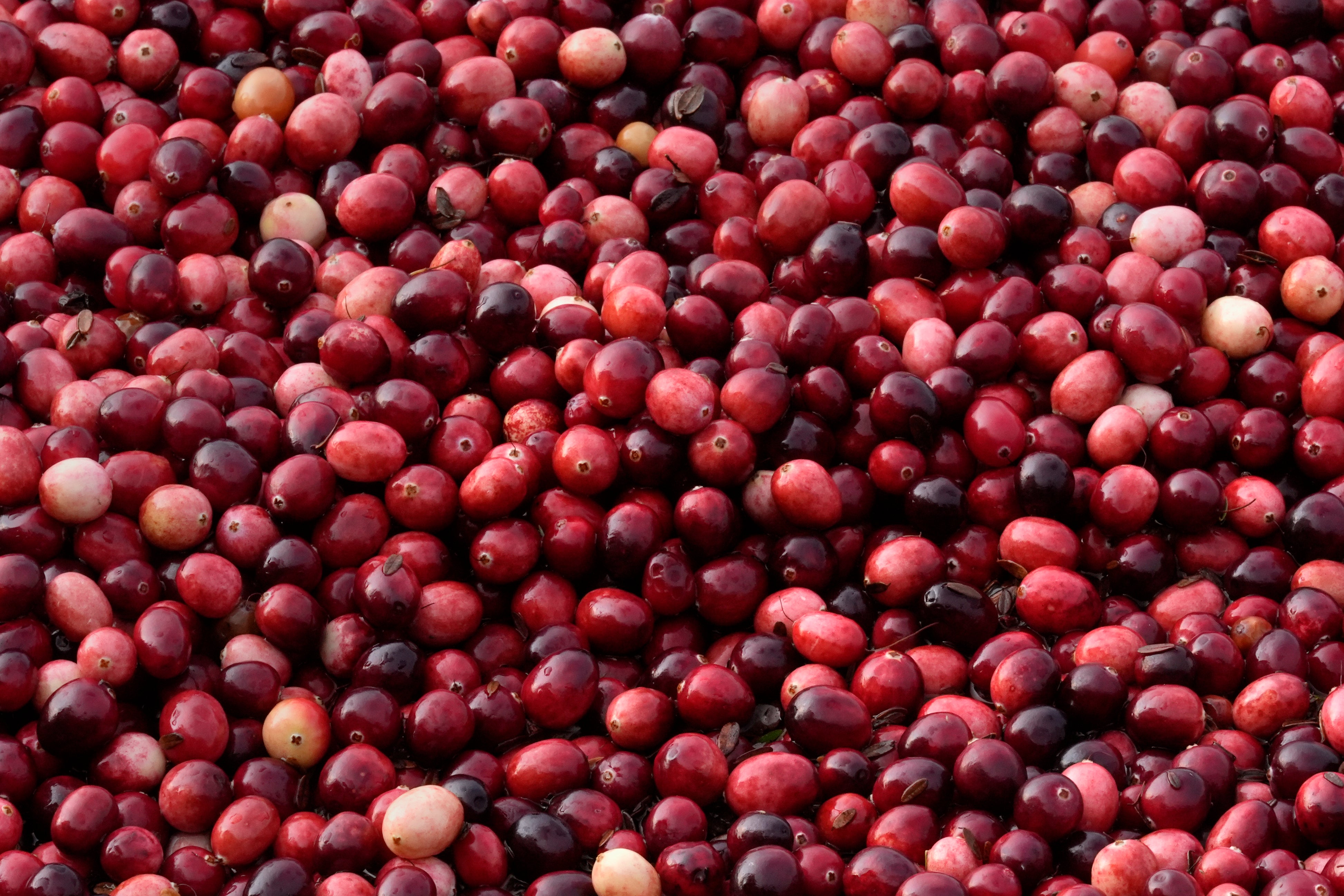Millions will eat cranberry sauce on Thanksgiving. But what bog did it come from?
The cranberry harvest runs from September through early November

Your support helps us to tell the story
From reproductive rights to climate change to Big Tech, The Independent is on the ground when the story is developing. Whether it's investigating the financials of Elon Musk's pro-Trump PAC or producing our latest documentary, 'The A Word', which shines a light on the American women fighting for reproductive rights, we know how important it is to parse out the facts from the messaging.
At such a critical moment in US history, we need reporters on the ground. Your donation allows us to keep sending journalists to speak to both sides of the story.
The Independent is trusted by Americans across the entire political spectrum. And unlike many other quality news outlets, we choose not to lock Americans out of our reporting and analysis with paywalls. We believe quality journalism should be available to everyone, paid for by those who can afford it.
Your support makes all the difference.In the weeks before Thanksgiving, some of the cranberries set to appear on dinner plates are floating on the Rocky Meadow bog in southeastern Massachusetts.
The cranberries have turned this pond pinkish crimson. Several workers, up to their waist in water, gently coral the berries toward a pump that vacuums them up onto a waiting truck. There, the berries are run through a system that separates them from leaves and vines and are transported to processing plant, which eventually turns them into sauce, juice or sweet and dried berries.
The native wetland plants that produce cranberries start growing in May. When they are ready to be harvested, farmers flood their bogs with water and send out a picking machine to shake the berries from the vines. Then more water is added to the bog, and the freed cranberries float to the surface.
“The season has been pretty good this year. We’ve had a pretty good crop,” said Steve Ward, a second-generation cranberry grower, on the edge of his bog.
The harvest runs from September through early November, and Ward is expected to produce between 15,000 and 20,000 barrels, the best crop he has had in three years. About 80% of those berries will go to Ocean Spray, a massive producer of cranberry products in the U.S.

This bog is one of nearly 300 in Massachusetts that cover some 14,000 acres, and this year farmers are projected to produce 2.2 million barrels of cranberries, with one barrel amounting to 100 pounds (45 kilograms). That's an increase of 12% over last year. Massachusetts is the second-biggest cranberry producing region in the U.S. behind Wisconsin, and the industry there dates back to the 1800s.
Despite the size of the sector, farmers in the state have weathered several challenges over the years, from trade wars to falling prices to a glut of berries. Some have sold off their bogs or moved to diversify by putting solar panels around their bogs. Ward has two solar sites near his bogs and is considering putting floating solar installations on his water holes and reservoirs.

Ward said farmers are also having to adapt to a changing climate — which the Massachusetts Cranberries, a group that advocates on behalf of the industry, said could lead to a lower harvest this year.
“We have had some challenges with some of the hot weather and had one of the longest dry spells we have ever had," he said. “We are having more 90-degree (32 degrees Celsius) days clumped together. The cranberry plants just don't like that type of weather. Our average temperatures, especially at night, are higher. Cranberries need cooler temperatures at night."